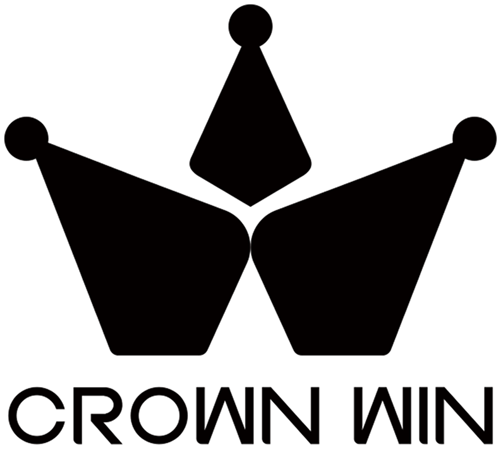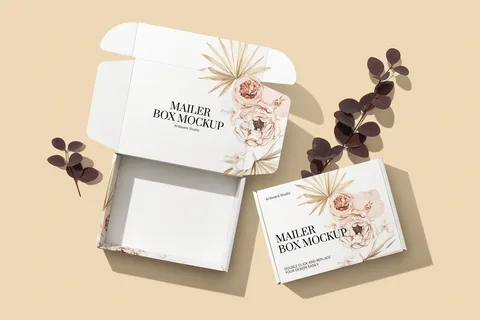
Introduction
Many people may not know that 52% of online consumers have a higher propensity to make a repeat purchase with an online merchant who packages their products in a high-quality way. In the competitive modern e-commerce world, your mailer box is not only a shipping container, but your brand is a physical engagement with your customers in the first place. When you get the package of the person, you have just a few seconds to make a lasting impression that can turn a one-time buyer into a brand ambassador.
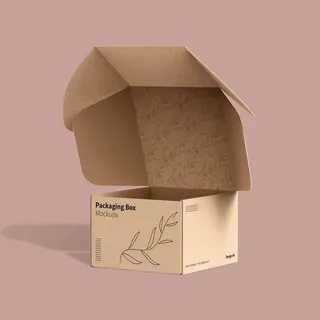
Most might not understand that fifty-two percent of online buyers are more likely to make a repeat purchase with a merchant online who packages their goods in a quality manner. In contemporary competitive e-commerce today, your mailer box is not merely a shipping container, but the very tangible interaction of your brand with your customers in the first place. Once those packages containing the people are received, you have a few seconds in which you must create an impression on the person that will make them a customer of the brand forever.
What is a Mailer Box?
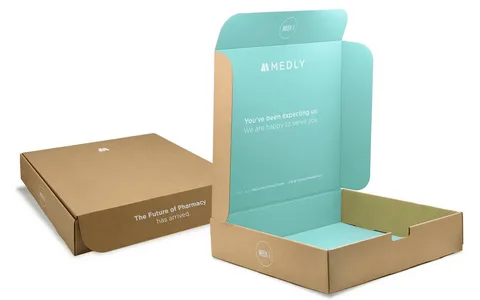
A mailer box is a corrugated cardboard box that is self-assembled and made with the intention of shipping goods to the consumer. In contrast to the use of traditional shipping boxes that demand extra tapes or adhesive to keep the shipment box closed, mailer boxes have built-in closure flaps that are simply locked without the use of external reinforcements, thus making it the best mailer box to use when performing e-commerce shipments.
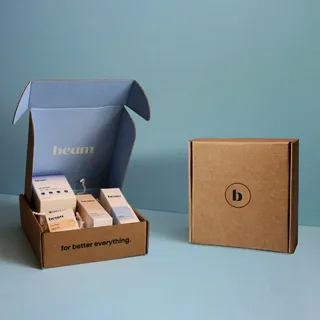
These are the flexible packaging options in different materials, such as single-wall corrugated cardboard that is used in those products that are lightweight, the double-wall construction option that is used in products that are heavy, and the specialty materials that are used in presenting high-quality products, such as kraft paperboard. The most widespread ones are tuck-end boxes, auto-lock bottom boxes, and roll-end closure boxes that have various assembly techniques and structural advantages.
There are various uses of mailer boxes in industries. They are used by subscription box services to deliver to subscribers monthly, by e-commerce retailers to ship products, by businesses to promote their products, package gifts, and introduce new products. Their printable faces and adjustable sizes also make them especially helpful when a brand requires an affordable but effective packaging.
Key Principles of Good Mailer Box Design

Designing a mailer box is an art that has to strike the right balance between several factors that interact with each other to form a unified brand experience. Those should be based on branding consistency, which is to make sure that your logo location, color palette, and font are consistent and match your overall brand identity in all customer contact points. Your mailer box must become an extension of your online presence, the design of your product, and your websites.
Form should not be neglected in favor of beauty. Your design should put more emphasis on structural integrity in protecting products during their transit as well as making them easy to open by customers. Take into account the way the box will be operated during the shipping process, both in the warehouse storage and final delivery, design it using the right material thickness with the right closure mechanisms.
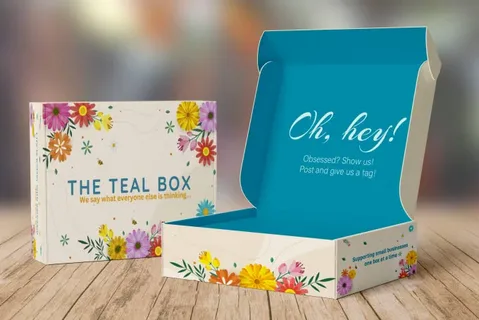
These aspects of the choice of materials and printing methods have a significant influence on the visual attractiveness and environmental friendliness. Recycled corrugated cardboard, printed soy-based inks, and water-based coatings are some of the greener choices that environmentally conscious consumers find acceptable, and that print quality remains strong. Matte finishes, spot UV coating, or soft-touch lamination are surface treatments that can enhance the touch experience without adding too much cost.
The cost-quality equation is a formula that should be considered with a good balance of your budget and the effects that you want. Although custom finishes and sophisticated die-cuts provide customer experiences worth remembering, they should fit your product margins and customer expectations. Lastly, to create an unmatched unboxing experience, it is important to take into consideration all the timeframes of the package delivery to product disclosure, establishing a sense of anticipation and pleasure that motivates social shares and repurchasing.
Design Idea #1: Minimalist & Clean

Minimalist packaging design adopts the philosophy of less is more, with clean lines and extensive white space, and a limited color palette to produce high-end, classical designs. This strategy puts the emphasis on crucial brand aspects and delivers such traits as high quality, a progressive attitude, and trust in the product itself.
Effective minimalist mailer boxes will have one or two large logo placements, which can be an embossed or printed finish in a metallic finish, with no less than ample white or neutral space. Minimal color palettes (usually one or three colors at most) bring visual harmony as well as brand recognition. Typography is especially crucial when you have a minimalistic design, and the fonts are clean and modern, specific to your brand, but not too many.
This is an incredibly effective design strategy with luxury goods, technology products, wellness brands, and businesses with an advanced demographic. Minimalist packaging is also attractive to social media photography because it provides clean backgrounds, which render products salient in unboxing videos and customer posts. Its simplicity tends to be translated to cost savings in printing, and still have a premium perception.
Design Idea #2: Bold Typography & Patterns

Design through typography changes the words to visual messages, whereby the fonts are over-type and lettering is creative, and the text is placed strategically to draw attention and convey brand personality. This style is especially effective in the case of brands that have solid verbal identities, well-remembered tag lines or brand names that should be given a spotlight.
Bold typography may be complemented by the further use of complementary patterns, geometric shapes, original illustrations, or brand-specific motifs, which can bring visual rhythm and interest. Think typography that runs around the box sides, which forms continuity when customers are handling the package. Dynamic compositions can be achieved with variable font weights, sizes, and orientations, which seem dynamic and modern.
Pattern integration must be purposeful, and not ornamental, maybe include brand colors, symbolic motifs, or even subtle textures that can support your brand narrative. It is specifically a design direction that is appropriate to the lifestyle brands, fashion businesses, creative services, and businesses that focus on youthful audiences and need to be bold and comfortable in design.
Design Idea #3: Illustrative & Whimsical

Drawing by hand and introducing amusing graphics add character and warmth to the packaging design and establish emotional ties with the objects of artistic production. This strategy is more human-centric and therefore reflects innovation and craftsmanship that cannot be achieved in mass-produced options.
Visual components may be such items as custom mascots, hand-written messages, botanical drawings, or abstract art that reflects the unique nature of your brand. These designs are playful in color palette and organic in form, which is a contrasting element to the geometric form of the box itself. Take into consideration seasonal changes or limited edition art that generates collectibility and expectations among clients.
Whimsical packaging is especially popular among brands in the food and beverage, children, artisanal and creative industries. The face-to-face quality of illustration implies sincerity and intimacy, which are becoming more important to customers who want to be afforded meaningful brand relationships. Social media also photographs very well using this style, which can be used to create organic sharing due to its intrinsic attractiveness and originality.
Design Idea #4: Matte/Soft-Touch Finishes & Embossing/Debossing
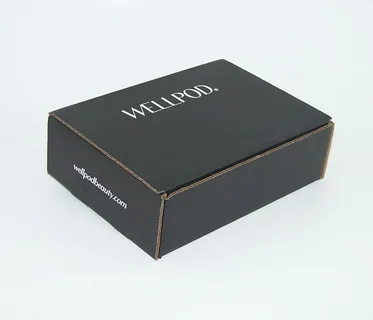
The tactile experiences produce long-term impressions that cannot be produced by the pure visual components. Matte and soft-touch surfaces make regular cardboard look like high-quality materials that are worth touching and feel like high-quality surfaces. These medications minimize glare, establish elegant looks, and offer minute texture differences which build the unboxing experience.
Embossing and debossing provide dimensionality, which provides visual interest with the effect of light and shadow. Embossed logos produce a sense of prominence and luxury and debossed features imply a sense of subtle elegance and taste. The mentioned techniques are especially effective when they are highlighted with metallic foils or spot UV treatments that are contrasted to matte surfaces.
Their tactile wow factor is why they can be charged more by the premium brands, gift packaging, and special edition, among others. The distinctive touch of textural services performed well is frequently remarked and remembered by the customers, forming positive associations that do not conclude with the first unboxing experience. These are also finishes that are easy to take photos of and add depth and sophistication to the marketing photographs.
Design Idea #5: Window Cut-Outs or Peek-A-Boo Features
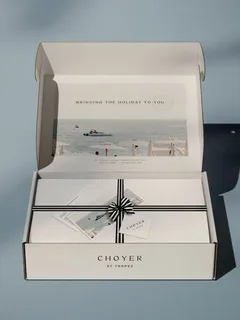
Anticipation and product preview are created by strategic die-cut windows, and the integrity of the packaging is preserved. These openings may give us a peek preview of colored items, atomistic details, or well-organized items that create a sense of excitement before actual unboxing.
Cuts, which are creatively die-cut, can strengthen brand identity – maybe heart shapes with romantic brands, geometrical shapes with tech companies, or organic shapes with natural products. Think of several tiny windows to form effective light plays or one big one to display hero products. The location of the windows must be deliberate and in accordance with the whole composition of the design.
These aspects can excel in subscription boxes where the diverse assortment of products brings a visual appeal, gift packaging where the gifts are supposed to impress the receiver, and products with already beautiful packaging that is worth displaying. But, keep in mind protection needs and shipping pressures in case of applying window features that will keep products safe during shipping.
Design Idea #6: Eco-Friendly/Sustainable Design
The rising rates of environmental consciousness have brought about more and more consumer categories that have made their buying behavior based on environmentally conscious packaging, which is not only morally correct but also economically wise. Green mailer boxes are mostly constructed with kraft paperboard, recycled corrugated paperboard, and biodegradable or compostable materials, which have little impact on the environment.
The design solutions can be achieved with the assistance of the earthly color schemes, organic surfaces, and low printing coverage. The water-based or Soy inks reduce the impact of chemicals and save the quality of the print. Consider the designs that highlight sustainability credentials by offering clarity on the message, certifications, or an understanding of proper disposal processes.
Sustainable packaging is likely to be simple because of the need, which presents the opportunity to be beautiful and understated, and allows the quality of natural materials to shine. The outdoor brands, wellness organizations, organic food producers, and consumer segments that are environmentally conscious are particularly attracted to this strategy. Green materials are easy to capture on camera, and organic and relatable marketing images are easier to produce.
Design Idea #7: Seasonal or Limited Edition Themes
Seasonal packaging guarantees the right timeliness as well as urgency that provokes purchase and socializing. They can feel current and celebratory with packages offered in holiday themes, seasonal color shifts or special occasion designs, and it also creates the potential of collections to the brand enthusiasts.
Limited edition plans can also entail rare color choices, personal artwork or commemorative message to create exclusiveness and collectability. Consider cooperating with artists, accentuating seasonal foods, or anniversary occasions that deserve special consideration of packaging. These designs should not lose the core brand awareness and make the relevance come out eventually.
Seasonal packaging works best with subscription services, holiday gift productions, food and beverage brands with a seasonal production, and fashion companies that capitalize on the seasonal events. Its time-driven nature is more prone to increasing social referring and is capable of commanding high prices, in addition to establishing a build-up to the succeeding seasonal releases.
Design Idea #8: Mix & Match Inserts or Compartments
The internal organization enhances the unboxing experiences with the careful product presentation and protection. Dividers, custom inserts, and compartment designs make gift-like reveals, but the products are delivered in flawless condition.
The inserts can contain opposite colors, high-quality materials such as foam or fabric, or even integrated boxes that add a layer of unwrapping. Think of modular systems that can be reused by the customers, tissue paper branded and adding luxury notes, or cutouts of any size that exactly fit the products. These internal components are not to be an addition to the exterior design.
Compartmentalized designs are effective with great use in the case of multi-product shipments, fragile products that need to be protected, gift sets, and subscription boxes with diverse products. The extra price is usually self-rewarding in terms of lower rates of damage, higher customer satisfaction, and social media postings of advanced unboxing.
Design Idea #9: Patterned Interiors/Hidden Details
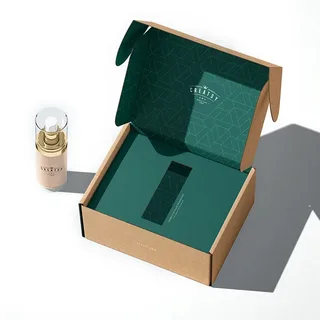
Interior decoration is something that introduces nice surprises which do not cease with opening sequences. Small details, messages, and art on inner faces are reward ideas and messages to customers with a curious nature as well as enhance brand personality with unexpected touches. Consider printing inspirational quotes, care tips or brand histories on internal flaps where they are intimate and where instead, they are on-point. These secret features are most commonly shared and posted on social media.The approach is highly suitable with the brands that prioritize the high degree of attention to details, are luxury-driven, or have a personal pledge to the customers. The aspect of surprise creates social pleasures to increase brand loyalty along with demonstrating completeness and focus on the brand. This type of information tends to create a signature that the consumer is eager and appreciates, when purchasing it repeatedly.
Design Idea #10: Bold Color Blocking or Duotone Effects

Use of color is also strategic in order to create a visual effect in terms of contrast, harmony, and emotional response. Color blocking illustrates vivid colors as the packaging surface is divided into discrete color sections, which may highlight the information hierarchy, create motion or simply seek attention with bold color choices.
Duotone effects utilize the two-color printing to create elaborate, cost-effective designs that are high in visual appeal. These plans can involve contrasting colors, color combinations of brands, as well as improbable combinations in order to create memorable effects. Consider gradient effects, geometrical divisions, or organic color flows that are intentional and branded.
Color-driven designs tend to be more effective in lifestyle brands or creative industries, particularly where the company is highly connected with youth and when the products are aimed at this segment. Bold color will work in social media scenarios where the promotional images are attractive to the eyes to encourage the extent of interaction and sharing.
Design Idea #11: Interactive/DIY Features
Interactive packaging components transform passive unpackaging to entertaining experiences that customers can recount and refer to. Emotional attachment to brands is enhanced through pull tabs, tear-away sections, fold-out elements or assembly components that provide opportunities of participation.
Custom stickers that can be chosen by the clients, holes that can be taken as souvenirs, and guidelines for assembling the pieces that can give puzzle-like experiences may be part of DIY features. Think about packaging that can be used as useful things, such as desktop holders, gift boxes that can be reused, or displays that can be used after their original use.
Interactive components are especially appropriate with tech products where the expectation of engagement is high, where play-value is a direct concern with children’s products, and where the target audience is a creative demographic eager to experience the product. Such characteristics tend to produce much social media reporting when clients present their experience of interaction with their followers.
Design Idea #12: Storytelling via Graphics or Fold-Out Panels
Packages provide a great brand storytelling platform, whether sequentially illustrated, illustrated storytelling, or sequential revelation across multiple panels. It can transform functional packaging into vehicles of communication that can inform, entertain and inspire the customers, either as comic strips, as a graph that shows the history of the company, or as step-by-step drawings of the benefits or how a product works.
Narrative packaging works especially well when the mission-focused company has a compelling founding story, a complicated product that can be somewhat expanded upon, or a brand that resonates with the communities engaged that value the richness and authenticity. These designs are more likely to provide an excellent emotional attachment, as well as provide some useful information, which will make the purchase decision easier, as well as generate brand loyalty.
Design Idea #13: Smart Branding & Personalized Touches
The combination of technology and customization generates the modern-day packaging experiences that are individualized and related. A QR code could be linked to personalized video messages or product registration, or even unique content that will go further than unboxing the product.
Opportunities available in personalization are custom names, purchase-specific messages, or variable graphics based on the preference of the customer or the contents of the order. Take into account augmented reality capabilities that emerge when customers scan packaging using smartphones, and it develops digital experiences with physical goods.
Tech-oriented brands and subscriptions where customer data can be gathered, and high-quality items where the customer prefers personalization are the categories that smart packaging elements would fit best. These characteristics usually generate shareable moments and present impactful data regarding customer interaction and preferences to be used in future marketing activities.
Common Mistakes to Avoid
The most common packaging error is overcrowding of design, where passion for various ideas leads to disorganized, confusing presentations that water down brand messages. Proper packaging entails strict editing in order to make sure that all the elements have a definite purpose and are aimed at achieving the overall communication objectives.
The quality of material can affect the product protection and the brand perception in a negative way. Poorly selecting the thickness of cardboard when it is used with heavy products, use of non-food-safe material with consumable products, or even its use of finishes that display handling damage easily can lead to negative customer experiences that will outshine design excellence.
Lack of consistency in branding in packaging, and other touchpoints misleads the customer and undermines brand recognition. The mailer box must have a natural sense of unity with the site design, social media, and product appearance, and not be a free piece of art that does not represent the overall brand image.
Unsustainable economic models are developed because of high cost and inadequate value perception. High-quality packaging solutions should be consistent with the prices and expectations of the customers to be worth the cost. Lastly, failure to consider shipping and handling specifications may lead to spoiled product, unhappy customers, and a higher rate of returns that cancel packaging expenses.
How to Choose the Right Design for You
The first step to successful packaging design is having a good sense of what you want to say about your brand and who you are going to attract. Make decisions based on what customers consider important to design namely; sustainability, luxury, playfulness and functionality. Carry out customer polls or reviewing social media activities to know what aspects of packaging your particular group of users are most strongly reacting to.
The design should take into account logistical issues such as shipping, storage, and product protection needs at the very first stages. An elegant design will not be logistically viable to be shipped under the stresses of ships or will demand too much storage area in spite of its beauty.
The problem of budget demands the straightforward assessment of cost versus benefit correlations. Determine what design features offer the most benefit to your investment, and this may be as basic as adding to printing quality or single special finishes, before moving on to more intricate multi-element designs.
The process of prototyping and testing allows for eliminating expensive errors and verifying the design concepts of the actual customers. Develop prototypes with real material and shipping techniques to test the look and the functionality, and make big orders only after that.
Tips for Implementation
By collaborating effectively with packaging designers, it is necessary to present good creative briefs that should be concise and convey: the brand objectives, functionality, and budgetary limitations. Provide elaborate brand tactics, rival precedents, and buyer awareness to ensure that designers become aware of your unique positioning and requirements.
The choice of printing partners can significantly impact the final results, so the potential suppliers should be considered not only regarding their price but also regarding their equipment opportunities, the level of quality, and sustainability. Sample similar work, carry out tests of similar color to ensure that you can look through to finished work.
The quality control process should include of evidence approvals in different stages, shipping stress material testing and final production sample pre-full production runs. Standardize approval process and consider color difference, surface finish and structural integrity.
Claims of environmental and sustainability certifications must be verified and recorded to do away with greenwashing claims. Incorporate suppliers who will provide clear information on the origins of materials, and manufacture and the alternatives of end of life disposal to help in the proper sustainability communications.
Conclusion
Mailer box design is a major opportunity to create practical packaging for memorable brand experiences, which may lead to customer loyalty, social sharing, and purchase reversion. The thirteen advanced methods considered in this guide, such as sparse sophistication to interactive functionalities, present diverse possibilities to discover your own brand image and meet feasible shipping and protection requirements. The trick is not to apply all those techniques, but to attentively select the design strengths that not only bear a genuine manifestation of your brand values, but also are attractive to your specific audience. By a handful of tricks like not clogging designs, not over-branding, by solving the problem of quality materials and strategic execution, you will be in a position to come up with a packaging that will serve as a powerful marketing instrument many years after the goods have been unwrapped. The expense of packing in your packaging design is offset in customer satisfaction, brand recognition, and organic promotion via customer word of mouth that turns your mailer box into a subset of your overall brand strategies.
